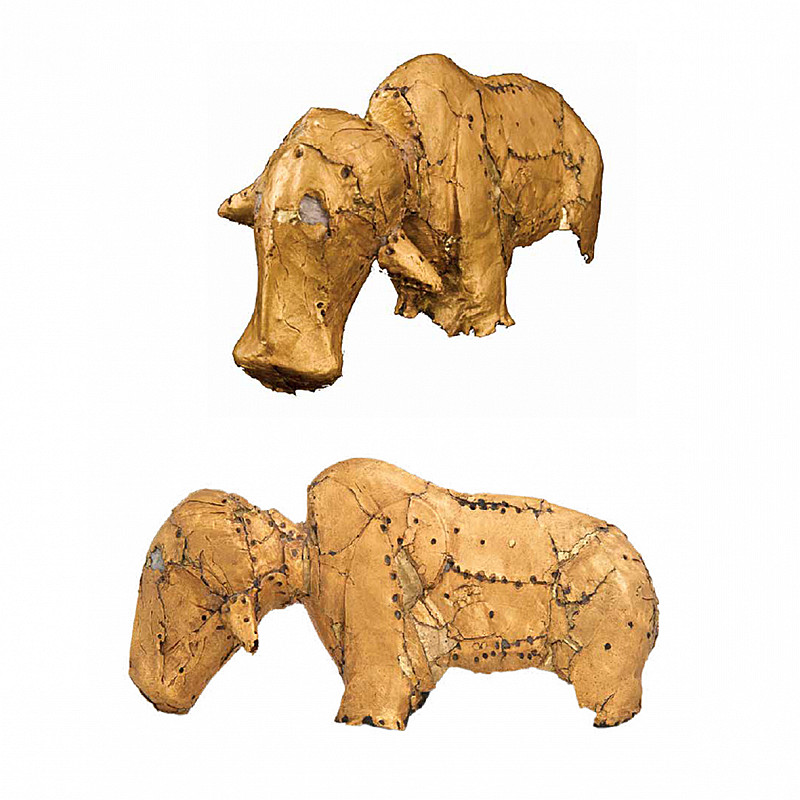Gold Bovine
Original Gold Grave (M1 A620), Mapungubwe Hill
AD 1250 – AD 1290
32.8g, 119.25mm x 54.17mm
MAP/G/002
Reconstructed by the SA Institute for Objects Conservation, 2008-2010
This gold foil figurine of a bovine, probably represents Mapungubwe-type domestic cattle. Similar to the gold rhino, it was originally formed and mounted onto a wooden core that has decayed over time. The facial profile is relatively flat or straight from poll to snout. The figure has down-turned horns (or ears) forming a downward continuation of the curve of the poll and is depicted with a distinctive hump. The bovine has clearly defined fore-limbs and a bulged rump and the head tapers inward and the flares out to form a snout, with decorative folds in the foil, to indicate a clear mouth and nostrils. The eyes are formed by two large perforations (which probably held solid gold nails as eyes).
An aperture on the rump is visible, but there is no tail. There are also a multitude of nail perforations across the torso. The torso is fragmentary and reconstructed from more than 40 gold foil fragments, mostly intact with very few being torn foil. Burnishing imprints and tool marks are visible on exterior surface as evidence of the production process. Portions of the gold torso were incorrectly matched with other gold foil fragments and were previously lead soldered in the 1980s. Recent stabilisation and assembly, which is a fully reversible process is now completed with Japanese tissue soaked in Paraloid B72 for added stabilisation to provide internal support to the gold figurine.

